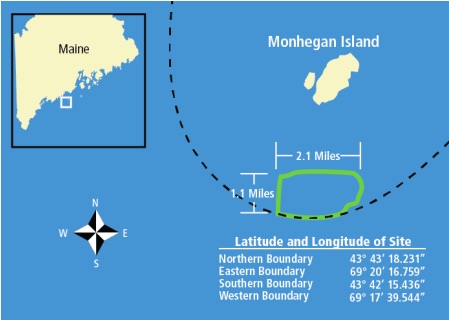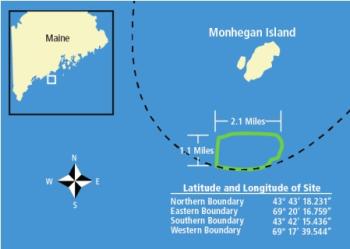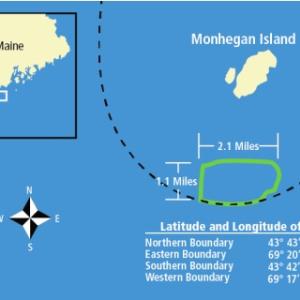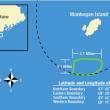Offshore wind platforms have serious flaws and divisive, short-term future
For more than 50 years I have understood that humans need to reduce their fossil fuel consumption, and that green technology, giving us solar, hydro, and wind power, are great alternative options. Through my association with the Lobster Institute in Orono, I have participated in multiple research projects and backed others with financial support.
At the Cranberry Isles Fisherman’s Co-op, in 2019, we invested in and installed on all our buildings solar roof panels. I’m a supporter of green energy. I believe in the potential of wind energy.
Why then am I appalled by proposed wind platforms off of Maine’s coast? I had to ask myself is this simply a “not in my backyard” knee-jerk reaction?
The answer is unequivocally no.
While wind power itself (with improved technology) makes sense, Maine’s current offshore project, which essentially is doing research to open the door for ownership of hundreds of thousands of ocean acres to private corporations, is foolhardy.
Here are some of the reasons I oppose offshore wind initiatives off the Maine coast:
- They threaten the economic health, cultural fabric, and history of Maine.
By removing thousands of acres of bottom from fishing access, these turbines threaten the economic health of Maine’s second largest industry (lobstering alone has an estimated value of a billion dollars a year), at the same time forcing a severe social impact for coastal communities. In fact, they would have a negative impact on all three of Maine’s coastal economic engines.
The uniqueness of Maine’s coast brings millions of tourists every year. A blow to the lobster industry would be a serious blow to that uniqueness. For the summer resident yachting population (large taxpayers) who now enjoy the freedom of today’s open oceans, the hundreds of platforms we are now being told are coming (“you can’t stop them”) will be an eyesore and pose serious hazards to navigation. We are living in difficult and unusual times. Covid times. Today Maine’s economy is suffering. Where would we have been in 2020 without the fisheries, our summer population, and tourism?
- They pose a serious hazard to navigation.
Never mind the platforms themselves, setting and maintaining them require dramatic increases in large boat and barge traffic. Cruise ships are kept in lanes (they are on the charts) and regular schedules to maintain safety, but platform ships would have no such channeling or controls. It is hard to explain to anyone land borne, the dangers of summer/fall fog, but it’s daunting, even with today’s radar capabilities, “like running blind”. Barges are notorious for causing damage to fixed gear. One barge is capable of causing hundreds of thousands of dollars of damage on a single coastal run.
- They pose a threat to endangered right whales.
This dramatic increase in traffic can only increase the risk to these slow-moving mammoths, who rightfully everyone is trying to protect. Ships strikes were reportedly responsible for 14 right whale deaths from 2010-2019. The acoustic vibrations associated with laying and maintaining cables and anchors could negatively affect both marine mammal and fish species.
- They pose a threat to migrating birds.
According to Bob Duchesne, citing the Cornell Lab of Ornithology, one out of every four birds have disappeared over North America in the last 50 years. That is 2.9 billion birds (Bangor Daily News, 11/15/2019).
Bob’s article is detailed and scary. Needless to say, the primary causes for this extreme decline, as far as he can ascertain, are related to human activities. While he says wind power “gets a disproportionate amount of blame,” I doubt he was aware of the possibility of many hundreds of wind turbines off our coast. Multiple studies have shown that wind turbines are harmful to birds. One of the last places left on this planet where birds have their freedom is over open water. They migrate by the millions over Gulf of Maine waters. These aren’t just waterfowl, but also everyday songbirds. Some of the species are approaching endangered status. The required illumination of these platforms at night, and conditions of poor visibility during the day, only increase the risk of collision.
- They pose a threat to marine corals and bottom-dwelling sea life.
How many miles of cable will be laid? Given that we are being told the cables will be buried, how can anyone say that no environmental damage will take place? If you are displacing mud, you’re displacing and killing marine organisms: tube worms, borers, quahogs, clams, lobsters, shrimp, and flat fish like skates, flounders, halibut, and much more. If you’re displacing rock, you are blasting sea anemones, coral, kelp, barnacles, varieties of starfish, crabs, krill, mussels, scallops, sponges, and varieties of fish like cod, cusk, haddock and hake, just to name a few species. The diversity of ocean life is amazing, and critical to its health.
- They could contribute to warming ocean waters.
Today’s underwater power cables emit heat. We are already seeing the effects of global warming, but as it continues, conditions could get worse in the Gulf of Maine. Will the hurricanes that ravage the Southeastern states shift further north? Hurricane winds combined with Maine tides. We have been lucky to have experienced hardly any hurricane force winds over the years, but even gale force winds fighting with our tides raise havoc. The ocean becomes a powerful force. Does the engineering capability exist to keep floating platforms intact in the face of such power? What is the cost of trying to maintain these miles-long cables when the sea bottom turns over? In Europe, there have already been instances of cables being damaged.
- Is it really green energy?
How much fossil fuel energy is needed to create and maintain these floating platforms, miles of electrical cables, the ships and barges, and onshore infrastructure needs? On the surface (no pun intended) it seems like an awful lot. The turbines themselves use oil to run efficiently.
- Will it really provide affordable energy?
For individuals, towns, politicians, and scientists, the temptation of research money will be great. Large energy companies are willing to spend upfront perhaps billions of dollars (now tax write-offs) for control of the electrical grid. If they get the leases and the control, they will expect to be paid back more billions of dollars. You have to ask, for a host of reasons, how can the energy provided by offshore wind platforms ever be affordable?
- Could it pose a threat to national security?
Floating platforms are sitting ducks. WWII is ancient history in today’s fast moving world, but one thing then was clear; control of the oceans was extremely difficult and also absolutely critical to winning the war. Honestly, I don’t know if our electrical grid is any safer on shore, but it definitely is not secure coming from offshore platforms.
- Is the technology already a dinosaur?
While windmills conjure up romantic Dutch images, today’s technology and the ability to capture wind and produce energy is evolving at warp-speed.
One of the reasons that Maine’s lobster industry is now considered the most successful fishery in the world is that we sacrificed immediate profits for long-term sustainability.
Is the money that energy companies are contemplating spending going to create a sustainable result? It seems likely that in the near future, far less intrusive, more efficient ways of capturing wind will be developed. Shouldn’t Maine’s engineering efforts be focused on new technology, not turbine technology that international companies already have worldwide access to?
- Ask yourself, why are we trying to capture wind offshore?
If the Federal Government and the State of Maine are interested in supporting wind energy initiatives, then why aren’t wind turbines being discussed for placement in our national parks? Higher altitudes create higher wind velocities. Wind velocities coming off Cadillac Mountain and the mountains of Acadia often exceed ocean velocities.
In conclusion, it is clear, even as a green energy supporter, that while wind power has a future, offshore wind platforms certainly have serious flaws and a divisive and short-term future. I’m not asking for wind turbines to be placed in our National Parks. Maine should pursue new wind technologies and support smaller initiatives as they have with solar power.
Jack Merrill is a director with the Maine Lobsterman’s Association, an advisor to the Lobster Institute, and a member of the Cranberry Isles Fisherman’s Co-op.
Event Date
Address
United States





























